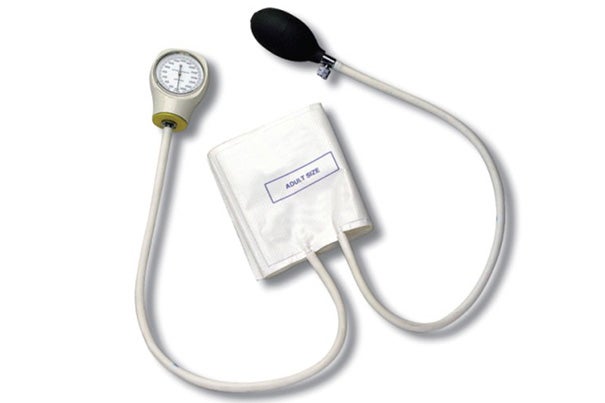
A Harvard endocrinologist was senior author on a study pinpointing the precise high blood pressure level and critical time when intervening was tied to a decrease in the risk of death.
Credit: Wikimedia Creative Commons
Pinpointing danger in hypertension
Guidelines for care management, intervention in new findings
High blood pressure is the most common risk factor for heart disease and death worldwide, and yet the answers to some of the most basic questions about how to manage it — when to introduce new medications, intensify treatment, or re-evaluate a patient — remain unclear.
In a study published this week in the BMJ (formerly the British Medical Journal), researchers from the Harvard-affiliated Brigham and Women’s Hospital examined the outcomes of 88,000 adults with hypertension to pinpoint the precise high blood pressure level and critical time when intervening was tied to a decrease in the risk of death.
“Ours is the first study to look at these key metrics in a large database of primary care patients with hypertension,” said senior author Alexander Turchin, a physician and researcher in the Division of Endocrinology at Brigham and Women’s. “Our findings could help guide clinicians as they think about how their patients should be treated in the clinic.”
Guidelines for managing care in the earliest stage of hypertension differ substantially. Patients with systolic blood pressure levels between 140 and 159 mm Hg are considered Stage 1. Recommendations regarding the best treatment path for these individuals differ among national measures such as the Eighth Joint National Committee (JNC8) guidelines, mainly used in the United States, and National Institute for Health and Care Excellence (NICE) guidelines, mainly used in European countries. Although some studies have analyzed how treating patients with a baseline systolic blood pressure between 150 and 159 influences outcomes, none have examined the impact of treatment on outcomes for patients between 140 and 149.
Researchers identified three factors that were tied to greater risk of death or cardiovascular event such as heart attack or stroke: a systolic blood level above 150, delays in intensification of treatment, and delays in reassessment of patients.
“The outcomes that we measured are ones that matter: death and cardiovascular events,” said Turchin, who is also director of clinical informatics at the Harvard Clinical Research Institute. “We wanted to gather more evidence to better understand how delays in treatment of elevated blood pressure influenced these outcomes.”
In patients with a systolic blood pressure between 130 and 150, the research team did not detect an increase in risk, but above the 150 threshold, the team observed progressively greater risk of an acute cardiovascular event or death.
They also found that delaying the intensification of treatment by more than 1.4 months was tied to increased risk of death or cardiovascular event. Current guidelines differ slightly, with some recommending intensifying treatment within two to four weeks and others recommending action within one month. However, the majority of patients in the retrospective study did not receive medication intensification within 1.4 months.
“Hypertension is treatable ― the right medical treatment can mitigate a person’s risk. But we need to know the optimal blood pressure, the optimal time to intensify treatment, and the optimal time to reassess,” said Turchin. “Our research supports the importance of avoiding delays in treatment and having follow-up appointments for patients with hypertension.”




